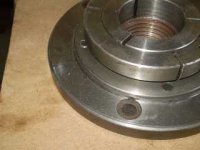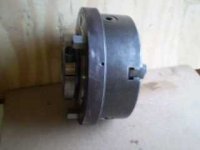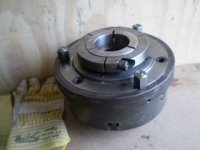Set-true chucks have 4 adjusting screws.
Trying to center a chuck with 3 screws would be frustrating.
--Doozer
Doozer, if you're going to take the trouble to respond, you might as well take the trouble to read fusker's posts
It's nothing like a "Set Tru" (or Grip-Tru, Ajust-Tru, or any other proprietary design), and it doesn't have four or three adjustment screws.
It has one, which can be infinitely re-oriented relative to the chuck body.
- - - -
Fusker - nice work! Thanks for taking the trouble to describe it, and to post photos.
I've toyed with the idea of something along those lines.
Another possibility that occurred to me was a purpose-made jack which located on the bed under the chuck, with a V pad to lift the chuck. Similar mode of use, except you'd always rotate the chuck so the eccentric 'throw' was downwards before tweaking.
I think this would work better for really heavy chucks - it seems to me the Ravn ring doesn't restrict the chuck from travelling in a curved path, partly from the pusher screw and partly from gravity. However I imagine this would not be a problem in smaller sizes. And you could always turn it so it was pushing vertically (down or up)
An advantage of my 'on-lathe' approach would be that it would work for any chucks whose backplate register fit had been 'eased'
Not so easy to apply for a gap-bed lathe, though...














